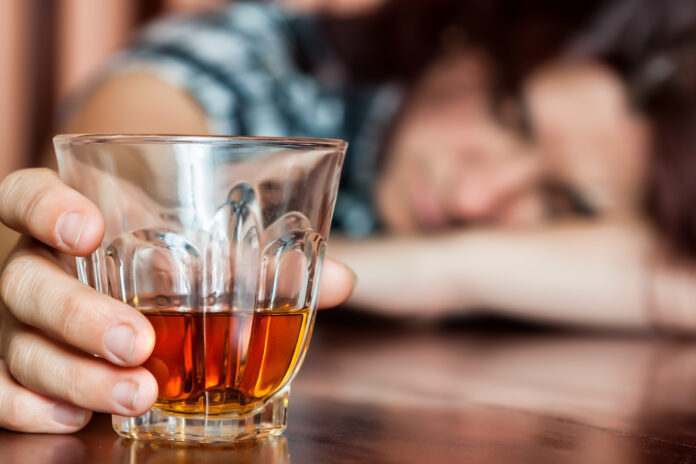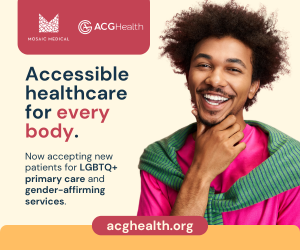The holiday season is upon us. With only two weeks until Christmas, Hanukkah and Solstice and three until New Year’s Day, the holiday frenzy is in high gear. Work is winding down in many places while partying in the workplace and elsewhere is revving up.
Advertising on TV and online is pushing the holiday spirit — and holiday spirits. It seems like every other ad is for alcohol: those fabulous Bailey’s drinks with shaved chocolate on top, some straight-up Jim Beam whiskey, the enticements of bubbly wines or an impromptu party outside with a bottle of Johnnie Walker or Remy or Crown Royal. And what about that amazing machine, Bartesian, that makes more than 50 different mixed drinks so you can mingle with your guests while they just pop in the pod of choice for their own cocktails?
The enticements of alcohol are touted subliminally — it makes the partying more fun, more sparkly, just…more. Have a drink and join the party.
The hard partying of the weeks between Thanksgiving and New Year’s will lead many to declare a “dry January” as their first resolution of the New Year. But for many people, the holiday drink-a-thon isn’t a one-off. It’s a year-long behavior and a serious and often life-threatening addiction.
There are no ads for hard drugs on TV or YouTube, Twitter/X or Instagram, either, like there are for alcohol. Alcohol is embraced as a normative part of American life. That softly admonishing line at the end of some — but not all — alcohol ads to “drink responsibly” is a caveat easily ignored.
America’s most common addiction
Alcohol is the most common addictive drug in the U.S. Alcohol is both a “gateway” drug to other addictions like meth and opiates and its own one-stop addiction. And while those hard drugs get the most press and alcohol abuse is rarely discussed, alcohol addiction and alcoholism, now called alcohol use disorder (AUD), kills more Americans than those other drugs annually. It is the most likely first drug tried by teenagers and even tweens and it’s a common addiction among the elderly.
There is no age group untouched by alcohol use. The CDC (Centers for Disease Control and Prevention) states that “a significant portion of the population over 12 years old reports using alcohol in the past year” and that “Alcohol is considered the most commonly used substance in the United States, meaning more people use alcohol than any other drug or substance.”
In addition, the CDC reports a 29% increase in deaths attributed to alcohol use in just the past five years, with the pandemic a defining factor in that increased use.
The CDC cites the accessibility of alcohol and how policies in many cities and states have expanded options for carry-out alcohol and home delivery as factors in increased use, particularly among younger people. They also note that throughout the shut-downs during the pandemic, places that sold alcohol to drink elsewhere like liquor stores were considered essential businesses and they stayed open. Stresses related to the pandemic, like loneliness, social isolation or certain mental health conditions also contributed to more alcohol use.
According to the NIH (National Institutes of Health), in the U.S., more than 178,000 people die from excessive alcohol use each year with about 120,000 male deaths and 59,000 female deaths.
The causes of alcohol deaths are varied and include alcohol poisoning from binge drinking — a particular problem among people under 25, motor vehicle crashes due to drunk driving, cancer, cirrhosis and other illnesses.
In addition, excessive alcohol use shortens the lives of those who are addicted to alcohol by an average of 24 years. It is, states the NIH, one of the leading preventable causes of death in the U.S., right behind tobacco use.
Alcohol and the LGBTQ+ community
For LGBTQ+ people, AUD is a very serious problem, yet one that gets little attention. As people PGN interviewed for this series said, alcohol is present in our queer and trans lives in ways other drugs are not. One gay man told PGN, “No one is going to the fentanyl club to meet people. No one is going to the heroin hangout. But alcohol is very much the background of our lives — the bars and clubs are where we socialize, where we meet each other. It’s where many of us were first introduced to our own queerness. And along with that has been many a drunken night or more.”
According to the National Library of Medicine, about 30% of the LGBTQ+ community has moderate alcohol dependency, compared to 5-10% of the general population. Within the community itself, there are groups that report heavier AUD than others. Gay and bisexual men under 35 have a 55% rate of alcohol use while 25% of bisexual women reported heavy drinking.
The reasons for the intensity and prevalence of alcohol abuse in the LGBTQ+ community is defined in various medical studies as succinctly related to external stressors like discrimination. The impact of bigotry that the LGBTQ+ community faces both collectively and as individuals leads many people to self-medicate. Addiction centers state that this is especially true for older LGBTQ+ individuals or those who live in areas that are more prone to anti-LGBTQ+ biases.
The CDC cites this anti-LGBTQ mindset as causal and resulting in emotional distress, including anxiety, fear and feelings of low self-esteem. The initial attempts to self-medicate can intensify these bad feelings and also alcohol consumption in a vicious spiral. As one trans woman told PGN, “The worse you feel, the more you drink, the worse you feel. It’s hard to break free of that.”
Alcohol and queer society
Just as the holiday ads make alcohol a welcoming and even necessary part of the season, alcohol has provided a backdrop for queer society and socializing throughout history. It was at house parties and private clubs and then a broader gay bar culture that queer and trans people found each other and with that, community. Much of LGBTQ+ history and culture was born in the bars — and over many drinks.
The modern gay-rights movement itself began at a small New York bar in Greenwich Village. The Stonewall riots/rebellion was birthed at that gay bar where police interference was finally too much. How many of those involved that night and in the subsequent days of rage were drunk?
Because bar and club culture has been so much a part of queer community, because those have always been safe spaces for queer and trans people to be themselves sans judgement and discrimination, alcohol abuse became normalized in subtle and endemic ways within the queer community.
Minority stress and access to care
Concomitant with this alcohol culture that has allowed for wider abuse is minority stress and lack of access to care or support networks. As PGN has reported over recent years, the lack of familial support is especially damaging for young LGBTQ+ people who subsequently experience depression and even suicidal ideation as a consequence.
Self-medicating is a common response to such feelings. PGN has reported in several series that abandonment by families of origin can lead to homelessness among LGBTQ+ youth when they either leave home or are forced out.
Minority stress impacts the rate of alcoholism as well. Minority stress is defined as the negative impact of adverse social conditions experienced by a marginalized social group. Such stressors impact a person’s sense of identity and relationship to the world around them. As a result of such social pressures, several co-occurring disorders, or mental illnesses that are present alongside alcoholism, are more common among members of the LGBTQ+ community.
The NIH notes LGBTQ+ people experience forms of minority stress shared with other marginalized groups, such as discrimination, expectation of rejection and prejudice-related life events like hate crimes, as well as unique stressors such as identity concealment and internalized homophobia.
In addition, the impact of minority stressors on people who live at the intersection of multiple marginalized identities like LGBTQ+ people of color, who experience stress associated with both racism and heterosexism and thus may be at heightened risk for even more adverse health outcomes.
The breadth of the alcohol problem within the LGBTQ+ community has yet to be fully examined, but PGN has interviewed both people dealing with that addiction and those trying to provide access to care, support and recovery.
Next: Who is most impacted? LGBTQ+ people speak about AUD and their experiences. Read the full story.

